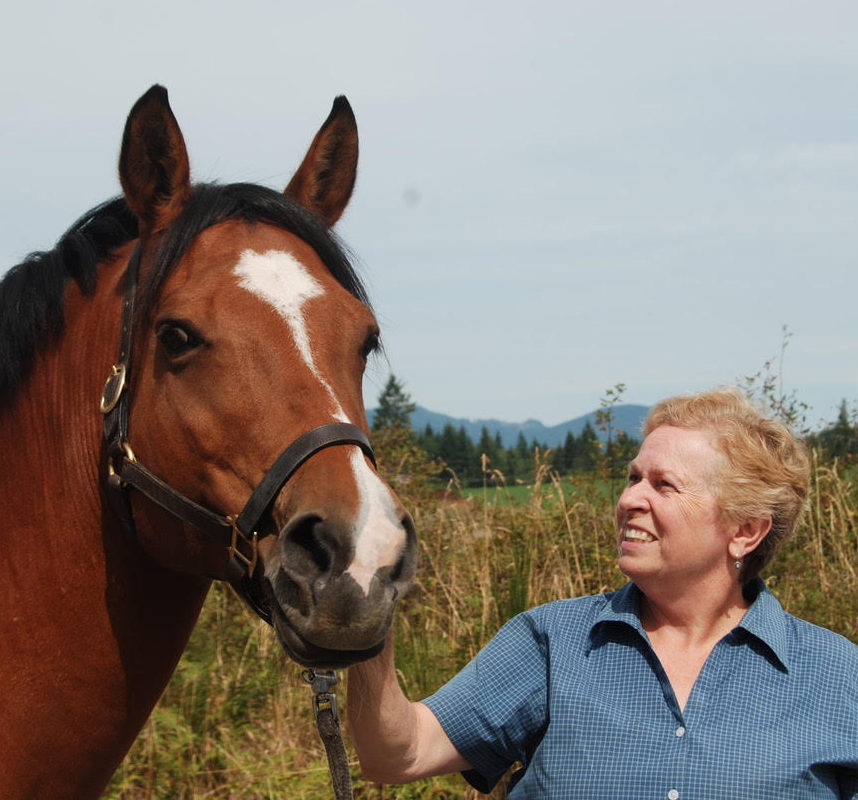Science-based training can help address behaviour and training issues

![]()
“Kathy loves horses as much as she loves to share her knowledge and experience of them with others.”
When we have a horse with a challenging behaviour – maybe loading into the trailer is difficult, or getting him to move or stop as quickly as we’d like – typically the issue is with us, not the horse.
“Most of the time, the issue is that the horse doesn’t understand what – or how – you’re asking,” explains certified instructor Kathy Jackson, of the Cowichan Valley’s SMART Riding. “He knows how to be a horse, I guarantee it. So somewhere along the way, a mistake has been made in how we’re communicating.”
The good news is that means the right training approach can modify the behaviour.
“We’re so fortunate to be able to do what we do with horses; to be able to teach and share that with others just puts it over the top,” Jackson says. “It’s just amazing.”
Why SMART is smart
In addition to a lifelong passion for horses and certification with Equine Canada, Jackson also has her full diploma in Equitation Science. This evidence-based, peer-reviewed scientific approach led her to create SMART Riding – standing for Science, Measurable, Attainable, Relaxing and Thoughtful.
While Jackson has two of her own horses she works with, for specific training or behaviour, she needs to work with the individual and their horse. “I’m going to come to you and together we’ll work through it,” she says.
Essentially horses learn in two ways: positive reinforcement – a “good boy” or a stroke along the withers within three seconds of the desired behaviour – and negative reinforcement. In this case, “negative” simply means the removal of something, Jackson emphasizes.
You might guide the bridle in the direction you want, then release that guiding pressure it once the horse has moved that way. Pulling up on the reins indicates you want to stop, then you release the pressure once the horse has done so.
How a wild horse behaves in a herd is very intuitive, and this is the same, Jackson explains, noting that repetition plays a key role as well.
“We always start with the basics and build from there, following the 10 principles of Equitation Science, such as using appropriate cues, consistency and training according to the horse’s ethology – the science of animal behaviour,” she says. “We start with the basics, which allows us to fix the higher-up issues. It’s like a light goes on for the horse: ‘Why didn’t you ask me that before?’”
‘Knowledge is power’
Having had horses since she was a child, ongoing education is key to Jackson’s approach.
“I love learning, and the science-based understanding of horses is so helpful for all equines and all disciplines of riders,” she says. “It’s our responsibility to do the best we can for our horses.”
Working with riders of all ages and experience levels, “there are no wrong answers, there’s just learning,” Jackson emphasizes. “Knowledge is power.”
To learn more, call Kathy Jackson at 250-701-5137 or 250-748-8790, or email kathrynasia58@gmail.ca.












